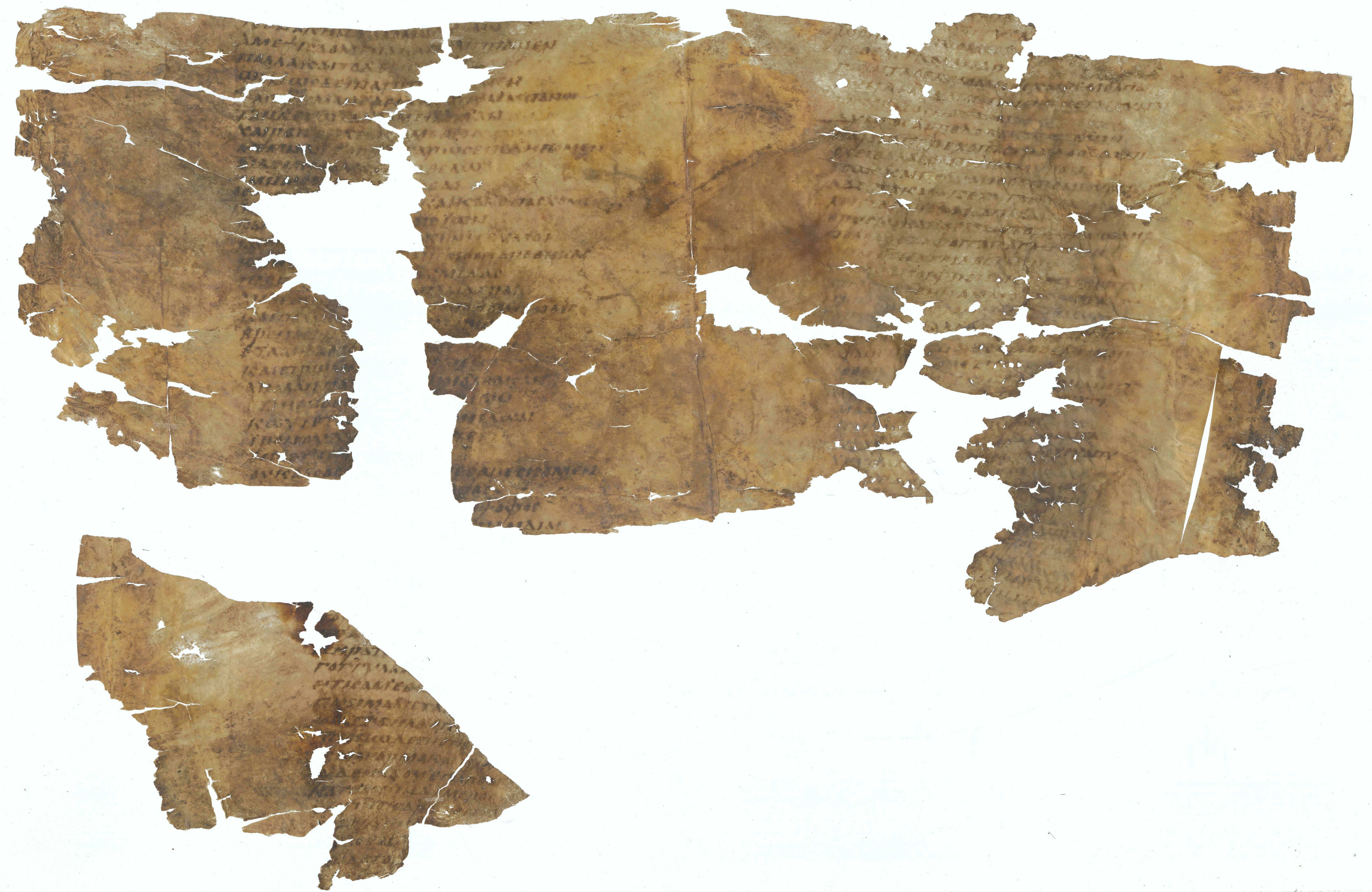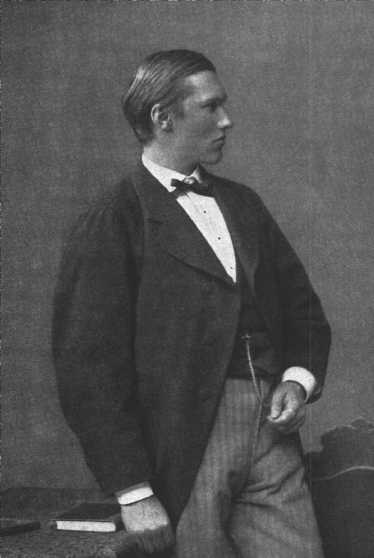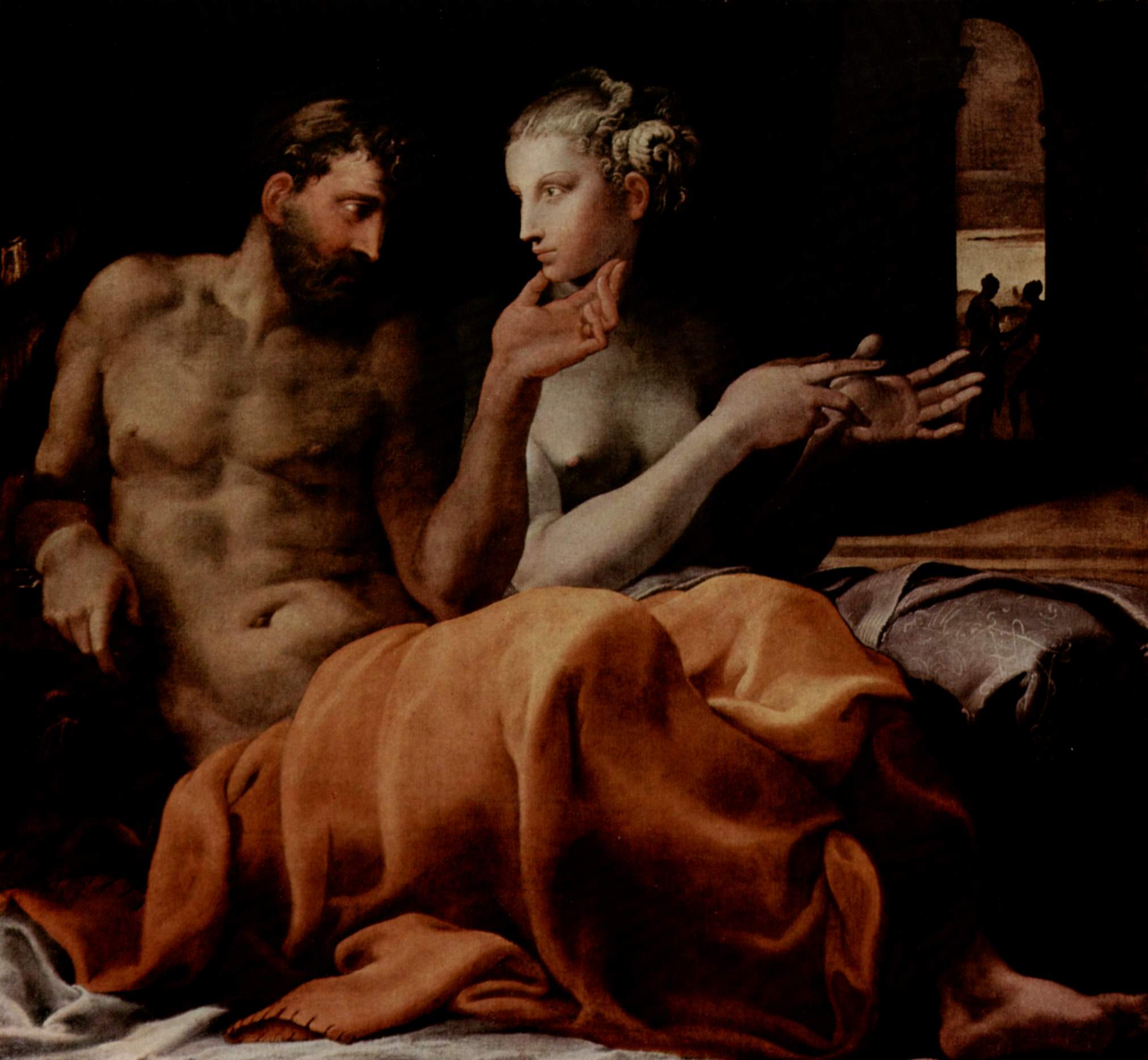|
Sappho 94
Sappho 94, sometimes known as Sappho's Confession, is a fragment of a poem by the archaic Greek poet Sappho. The poem is written as a conversation between Sappho and a woman who is leaving her, perhaps in order to marry, and describes a series of memories of their time together. It survives on a sixth-century AD scrap of parchment. Scholarship on the poem has focused on whether the initial surviving lines of the poem are spoken by Sappho or the departing woman, and on the interpretation of the eighth stanza, possibly the only mention of homosexual activities in the surviving Sapphic corpus. Preservation The poem was one of a group (Sappho 92–97) preserved on a sixth-century piece of parchment discovered in Egypt. This parchment, P. Berol. 9722, was probably originally part of a book. The parchment is 12 cm high (though the page was originally about twice this height) and 43.5 cm wide, and consists of a double-page spread with a third page sewn to the right han ... [...More Info...] [...Related Items...] OR: [Wikipedia] [Google] [Baidu] |
Sappho
Sappho (; el, Σαπφώ ''Sapphō'' ; Aeolic Greek ''Psápphō''; c. 630 – c. 570 BC) was an Archaic Greek poet from Eresos or Mytilene on the island of Lesbos. Sappho is known for her Greek lyric, lyric poetry, written to be sung while accompanied by music. In ancient times, Sappho was widely regarded as one of the greatest lyric poets and was given names such as the "Tenth Muse" and "The Poetess". Most of Poetry of Sappho, Sappho's poetry is now lost, and what is extant has mostly survived in fragmentary form; only the "Ode to Aphrodite" is certainly complete. As well as lyric poetry, ancient commentators claimed that Sappho wrote elegiac and iambic poetry. Three epigrams attributed to Sappho are extant, but these are actually Hellenistic imitations of Sappho's style. Little is known of Sappho's life. She was from a wealthy family from Lesbos, though her parents' names are uncertain. Ancient sources say that she had three brothers; Charaxos (Χάραξος), Larichos ( ... [...More Info...] [...Related Items...] OR: [Wikipedia] [Google] [Baidu] |
Ode To Aphrodite
The Ode to Aphrodite (or Sappho fragment 1) is a lyric poem by the archaic Greek poet Sappho, who wrote in the late seventh and early sixth centuries BCE, in which the speaker calls on the help of Aphrodite in the pursuit of a beloved. The poem survives in almost complete form, with only two places of uncertainty in the text, preserved through a quotation from Dionysius of Halicarnassus' treatise ''On Composition'' and in fragmentary form in a scrap of papyrus discovered at Oxyrhynchus in Egypt. The Ode to Aphrodite comprises seven Sapphic stanzas. It begins with an invocation of the goddess Aphrodite, which is followed by a narrative section in which the speaker describes a previous occasion on which the goddess has helped her. The poem ends with an appeal to Aphrodite to once again come to the speaker's aid. The seriousness with which Sappho intended the poem is disputed, though at least parts of the work appear to be intentionally humorous. The poem makes use of Homeric la ... [...More Info...] [...Related Items...] OR: [Wikipedia] [Google] [Baidu] |
Ancient Greek Poems
Ancient history is a time period from the beginning of writing and recorded human history to as far as late antiquity. The span of recorded history is roughly 5,000 years, beginning with the Sumerian cuneiform script. Ancient history covers all continents inhabited by humans in the period 3000 BCAD 500. The three-age system periodizes ancient history into the Stone Age, the Bronze Age, and the Iron Age, with recorded history generally considered to begin with the Bronze Age. The start and end of the three ages varies between world regions. In many regions the Bronze Age is generally considered to begin a few centuries prior to 3000 BC, while the end of the Iron Age varies from the early first millennium BC in some regions to the late first millennium AD in others. During the time period of ancient history, the world population was already exponentially increasing due to the Neolithic Revolution, which was in full progress. While in 10,000 BC, the world population stood ... [...More Info...] [...Related Items...] OR: [Wikipedia] [Google] [Baidu] |
Sappho 2
Sappho 2 is a fragment of a poem by the archaic Greek lyric poet Sappho. In antiquity it was part of Book I of the Alexandrian edition of Sappho's poetry. Sixteen lines of the poem survive, preserved on a potsherd discovered in Egypt and first published in 1937 by Medea Norsa. It is in the form of a hymn to the goddess Aphrodite, summoning her to appear in a temple in an apple grove. The majority of the poem is made up of an extended description of the sacred grove to which Aphrodite is being summoned. Preservation Before 1937, only two strophes of the poem survived, both quoted in other ancient authors. Hermogenes of Tarsus quotes part of the second strophe in his work ''Kinds of Style'' (''Peri Ideon''), and Athenaeus quotes from the fourth stanza in the '' Scholars at Dinner'' (''Deipnosophistae''). In 1937, the Italian papyrologist Medea Norsa published an ostrakon which preserves four stanzas of the poem. The ostrakon (''PSI XIII.1300'') was discovered in Egypt, a ... [...More Info...] [...Related Items...] OR: [Wikipedia] [Google] [Baidu] |
Greek Chorus
A Greek chorus, or simply chorus ( grc-gre, χορός, chorós), in the context of ancient Greek tragedy, comedy, satyr plays, and modern works inspired by them, is a homogeneous, non-individualised group of performers, who comment with a collective voice on the dramatic action. The chorus consisted of between 12 and 50 players, who variously danced, sang or spoke their lines in unison, and sometimes wore masks. Etymology Historian H. D. F. Kitto argues that the term ''chorus'' gives us hints about its function in the plays of ancient Greece: "The Greek verb ''choreuo'', 'I am a member of the chorus', has the sense 'I am dancing'. The word ''ode'' means not something recited or declaimed, but 'a song'. The 'orchestra', in which a chorus had its being, is literally a 'dancing floor'." From this, it can be inferred that the chorus danced and sang poetry. Dramatic function Plays of the ancient Greek theatre always included a chorus that offered a variety of background and summary ... [...More Info...] [...Related Items...] OR: [Wikipedia] [Google] [Baidu] |
Symposium
In ancient Greece, the symposium ( grc-gre, συμπόσιον ''symposion'' or ''symposio'', from συμπίνειν ''sympinein'', "to drink together") was a part of a banquet that took place after the meal, when drinking for pleasure was accompanied by music, dancing, recitals, or conversation.Peter Garnsey, ''Food and Society in Classical Antiquity'' (Cambridge University Press, 1999), p. 13online Sara Elise Phang, ''Roman Military Service: Ideologies of Discipline in the Late Republic and Early Principate'' (Cambridge University Press, 2008), pp. 263–264. Literary works that describe or take place at a symposium include two Socratic dialogues, Plato's '' Symposium'' and Xenophon's '' Symposium'', as well as a number of Greek poems such as the elegies of Theognis of Megara. Symposia are depicted in Greek and Etruscan art that shows similar scenes. In modern usage, it has come to mean an academic conference or meeting such as a scientific conference. The equivalent ... [...More Info...] [...Related Items...] OR: [Wikipedia] [Google] [Baidu] |
Ulrich Von Wilamowitz-Moellendorff
Enno Friedrich Wichard Ulrich von Wilamowitz-Moellendorff (22 December 1848 – 25 September 1931) was a German classical philologist. Wilamowitz, as he is known in scholarly circles, was a renowned authority on Ancient Greece and its literature. Life Youth Wilamowitz-Moellendorff was born in Markowitz (Markowice), a small village near Hohensalza (Inowrocław), in the then Province of Posen (now part of the Kuyavian-Pomeranian Voivodeship), to a Germanized family of distant Polish ancestry. His father, a Prussian Junker, was Arnold Wilamowitz, of Szlachta origin and using the Ogończyk coat of arms, while his mother was Ulrika, née Calbo. The couple settled in a small manor confiscated from a local noble in 1836. The Prussian part of their name, von Moellendorf, was acquired in 1813, when Prussian field marshal Wichard Joachim Heinrich von Möllendorf adopted Ulrich's ancestors. Wilamowitz, a third child, grew up in East Prussia. In 1867 Wilamowitz passed his ''Abitur ... [...More Info...] [...Related Items...] OR: [Wikipedia] [Google] [Baidu] |
Odyssey
The ''Odyssey'' (; grc, Ὀδύσσεια, Odýsseia, ) is one of two major ancient Greek epic poems attributed to Homer. It is one of the oldest extant works of literature still widely read by modern audiences. As with the ''Iliad'', the poem is divided into 24 books. It follows the Greek hero Odysseus, king of Ithaca, and his journey home after the Trojan War. After the war, which lasted ten years, his journey lasted for ten additional years, during which time he encountered many perils and all his crew mates were killed. In his absence, Odysseus was assumed dead, and his wife Penelope and son Telemachus had to contend with a group of unruly suitors who were competing for Penelope's hand in marriage. The ''Odyssey'' was originally composed in Homeric Greek in around the 8th or 7th century BCE and, by the mid-6th century BCE, had become part of the Greek literary canon. In antiquity, Homer's authorship of the poem was not questioned, but contemporary scholarship ... [...More Info...] [...Related Items...] OR: [Wikipedia] [Google] [Baidu] |
Penelope
Penelope ( ; Ancient Greek: Πηνελόπεια, ''Pēnelópeia'', or el, Πηνελόπη, ''Pēnelópē'') is a character in Homer's ''Odyssey.'' She was the queen of Ithaca and was the daughter of Spartan king Icarius and naiad Periboea. Penelope is known for her fidelity to her husband Odysseus, despite the attention of more than a hundred suitors during his absence. In one source, Penelope's original name was Arnacia or Arnaea. Etymology Glossed by Hesychius as "some kind of bird" (today arbitrarily identified with the Eurasian wigeon, to which Linnaeus gave the binomial ''Anas penelope''), where () is a common Pre-Greek suffix for predatory animals; however, the semantic relation between the proper name and the gloss is not clear. In folk etymology, () is usually understood to combine the Greek word (), "weft", and (), "face", which is considered the most appropriate for a cunning weaver whose motivation is hard to decipher. Robert S. P. Beekes believed the ... [...More Info...] [...Related Items...] OR: [Wikipedia] [Google] [Baidu] |
Lyric Poetry
Modern lyric poetry is a formal type of poetry which expresses personal emotions or feelings, typically spoken in the first person. It is not equivalent to song lyrics, though song lyrics are often in the lyric mode, and it is also ''not'' equivalent to Ancient Greek lyric poetry, which ''was'' principally limited song lyrics, or chanted verse, hence the confusion. The term for both modern lyric poetry and modern song lyrics both derive from a form of Ancient Greek literature, the Greek lyric, which was defined by its musical accompaniment, usually on a stringed instrument known as a kithara. The term owes its importance in literary theory to the division developed by Aristotle among three broad categories of poetry: lyrical, dramatic, and epic. Lyric poetry is also one of the earliest forms of literature. Meters Much lyric poetry depends on regular meter based either on number of syllables or on stress – with two short syllables typically being exchangeable for one lo ... [...More Info...] [...Related Items...] OR: [Wikipedia] [Google] [Baidu] |
Sappho 95
Sappho (; el, Σαπφώ ''Sapphō'' ; Aeolic Greek ''Psápphō''; c. 630 – c. 570 BC) was an Archaic Greek poet from Eresos or Mytilene on the island of Lesbos. Sappho is known for her Greek lyric, lyric poetry, written to be sung while accompanied by music. In ancient times, Sappho was widely regarded as one of the greatest lyric poets and was given names such as the "Tenth Muse" and "The Poetess". Most of Poetry of Sappho, Sappho's poetry is now lost, and what is extant has mostly survived in fragmentary form; only the "Ode to Aphrodite" is certainly complete. As well as lyric poetry, ancient commentators claimed that Sappho wrote elegiac and iambic poetry. Three epigrams attributed to Sappho are extant, but these are actually Hellenistic imitations of Sappho's style. Little is known of Sappho's life. She was from a wealthy family from Lesbos, though her parents' names are uncertain. Ancient sources say that she had three brothers; Charaxos (Χάραξος), Larichos ( ... [...More Info...] [...Related Items...] OR: [Wikipedia] [Google] [Baidu] |
Sappho 31
Sappho 31 is an archaic Greek lyric poem by the ancient Greek poet Sappho of the island of Lesbos. The poem is also known as phainetai moi (φαίνεταί μοι) after the opening words of its first line. It is one of Sappho's most famous poems, describing her love for a young woman. Fragment 31 is one of Sappho's most famous works, and has been the subject of numerous translations and adaptations from ancient times to the present day. Celebrated for its portrayal of intense emotion, the poem has influenced modern conceptions of lyric poetry, and its depiction of desire continues to influence writers today. Preservation Fragment 31 was one of the few substantial fragments of Sappho to survive from ancient times, preserved in the first-century AD treatise on aesthetics ''On the Sublime''. Four stanzas are well-preserved, followed by part of one more line; this, as well as Catullus' adaptation of the poem, suggests that there was originally one more stanza of the poem, often ... [...More Info...] [...Related Items...] OR: [Wikipedia] [Google] [Baidu] |









